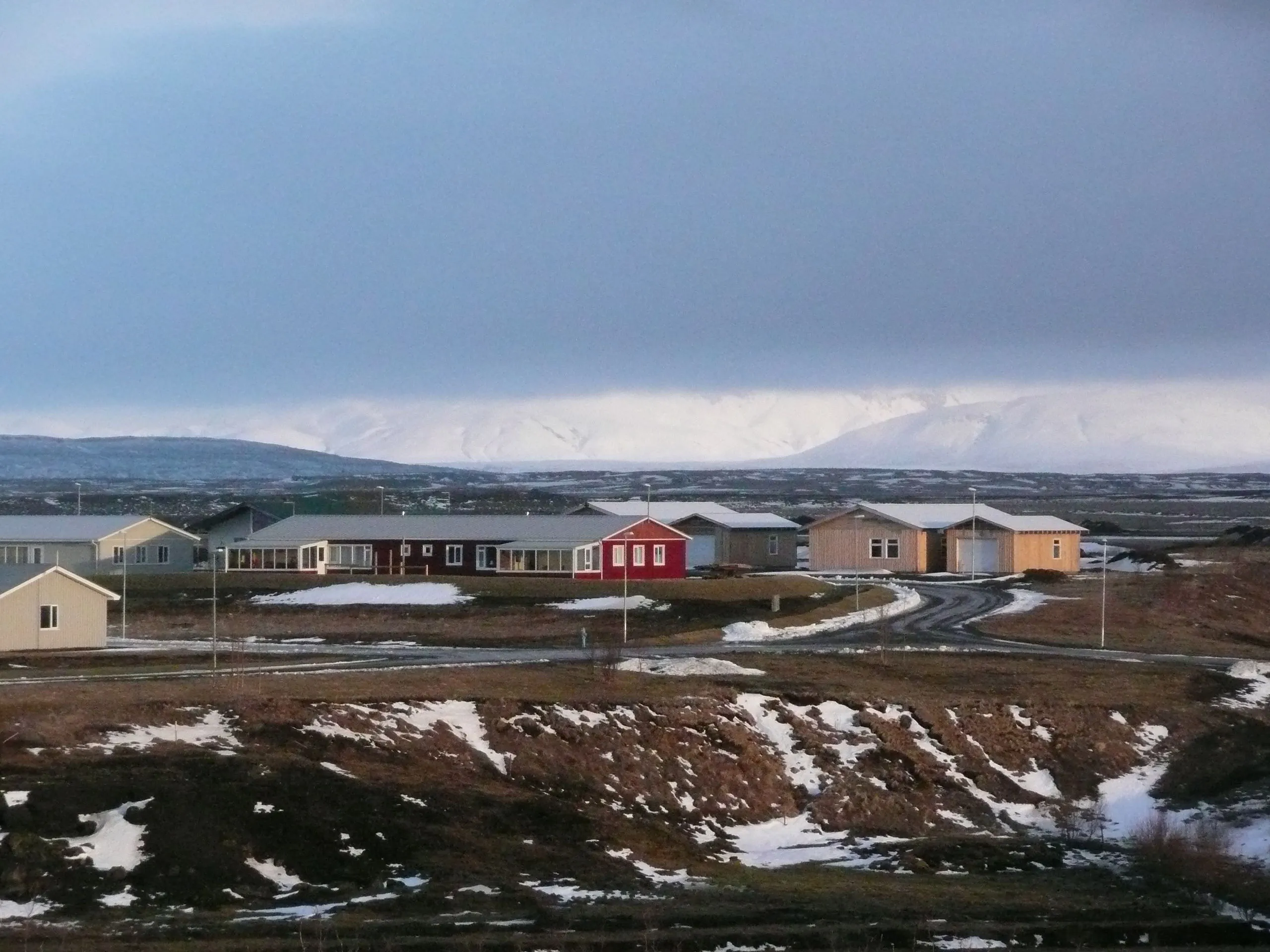
Flúðir, a village in Iceland's southern region, is renowned for its stunning natural scenery and extensive geothermal activity. This makes it an ideal spot for visitors keen on exploring Iceland's iconic landmarks.The village is an excellent starting point for visitors exploring iconic Icelandic attractions.
Known for its agricultural productivity, the area supports lush green landscapes even in harsh climates thanks to the geothermal heat. Visitors often enjoy the historical Secret Lagoon, a geothermal pool that was Iceland's first swimming pool, built-in 1891.
This pool reflects the village's integration of natural resources into daily life and leisure. Flúðir's historical importance stretches back to its early adoption of geothermal energy, transforming it into a center for agriculture and wellness with its warm springs.
The Secret Lagoon, or 'Gamla Laugin,' was central to community life, providing a place for swimming lessons and relaxation until the mid-20th century. Today, Flúðir is not just a quiet retreat but a testament to sustainable living. Its geothermal springs support agriculture and tourism, drawing visitors for relaxation and adventure in the stunning Golden Circle region.
This area is also significant for being near both the famous Gullfoss waterfall and the Geysir, enhancing its appeal as a key destination in Iceland's touristic landscape.
Flúðir, a village in Iceland's southern region, is renowned for its stunning natural scenery and extensive geothermal activity. This makes it an ideal spot for visitors keen on exploring Iceland's iconic landmarks.The village is an excellent starting point for visitors exploring iconic Icelandic attractions.
Known for its agricultural productivity, the area supports lush green landscapes even in harsh climates thanks to the geothermal heat. Visitors often enjoy the historical Secret Lagoon, a geothermal pool that was Iceland's first swimming pool, built-in 1891.
This pool reflects the village's integration of natural resources into daily life and leisure. Flúðir's historical importance stretches back to its early adoption of geothermal energy, transforming it into a center for agriculture and wellness with its warm springs.
The Secret Lagoon, or 'Gamla Laugin,' was central to community life, providing a place for swimming lessons and relaxation until the mid-20th century. Today, Flúðir is not just a quiet retreat but a testament to sustainable living. Its geothermal springs support agriculture and tourism, drawing visitors for relaxation and adventure in the stunning Golden Circle region.
This area is also significant for being near both the famous Gullfoss waterfall and the Geysir, enhancing its appeal as a key destination in Iceland's touristic landscape.
Flúðir is renowned for its Secret Lagoon, Iceland's oldest swimming pool, which offers a natural geothermal bathing experience. Additionally, the village's geothermal activity supports a variety of greenhouses where fruits and vegetables are grown. Nearby attractions include the Gullfoss waterfall and the Geysir hot spring area, part of the Golden Circle tour route.
Visitors can enjoy bathing in the Secret Lagoon, exploring local greenhouses, and trying fresh Icelandic produce directly from the source. For adventure seekers, nearby areas offer horse riding, hiking, and seasonal tours like viewing the Northern Lights. Flúðir also serves as an excellent base for exploring the Golden Circle.
Flúðir has several dining options, reflecting its rich culinary scene rooted in local and organic produce. Restaurants and cafes in the area often feature dishes made with locally sourced ingredients, offering authentic Icelandic cuisine.
Flúðir can be visited year-round; however, the experience varies by season. Summer offers lush greenery and full access to all local attractions, while winter allows for a quieter visit with the possibility of seeing the Northern Lights. Accommodation prices tend to be lower from December to February.
Flúðir is about a 1.5-hour drive from Reykjavik, accessible via the Ring Road and then by road number 30. It is well-positioned within the Golden Circle, making it an easy addition to most travel itineraries in Southern Iceland.
Why should you?